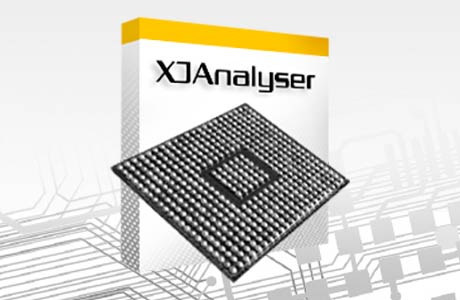XJTAG Boundary Scan Test

Electrical testing of assembled printed circuit boards has previously been done with needle board adapters in in-circuit or flying probe testers. However, this presupposes that signals are mechanically reachable either at contact points or special test points. Miniaturization reduces the available space and makes it harder to place the required number of test points. For BGA devices connected to other BGAs via inner layers, some signals cannot be routed outward as this affects signal quality (signal integrity, SI).
Boundary Scan is another test method that can be used as a supplement to the previous test methods. Many BGAs already have a four- or five-pin JTAG interface. When BGAs are connected to a JTAG bus on a printed circuit board, they can be tested and their adjacent components, such as the JTAG bus, can be tested. RAM, Flash, etc. are involved in the electrical self-test.
XJTAG's Boundary Scan solution provides a cost-effective way to create Boundary Scan test protocols. The scope of delivery includes a case with the complete equipment, consisting of hardware and software, in order to carry out Boundary Scan Tests successfully. With XJLink, the USB interface adapter, you establish the connection between your PC and the JTAG interface on the prototype circuit board. Likewise, your mounter who performs the test in production will also connect the boards.
The supplied software helps to create a complete test report. A library contains the internal models of the JTAG-capable components, which can then be interconnected. Not included models can be created by XJTAG for free. In addition, you will receive a demo board and a corresponding tutorial, with which you can learn how to use the software.















